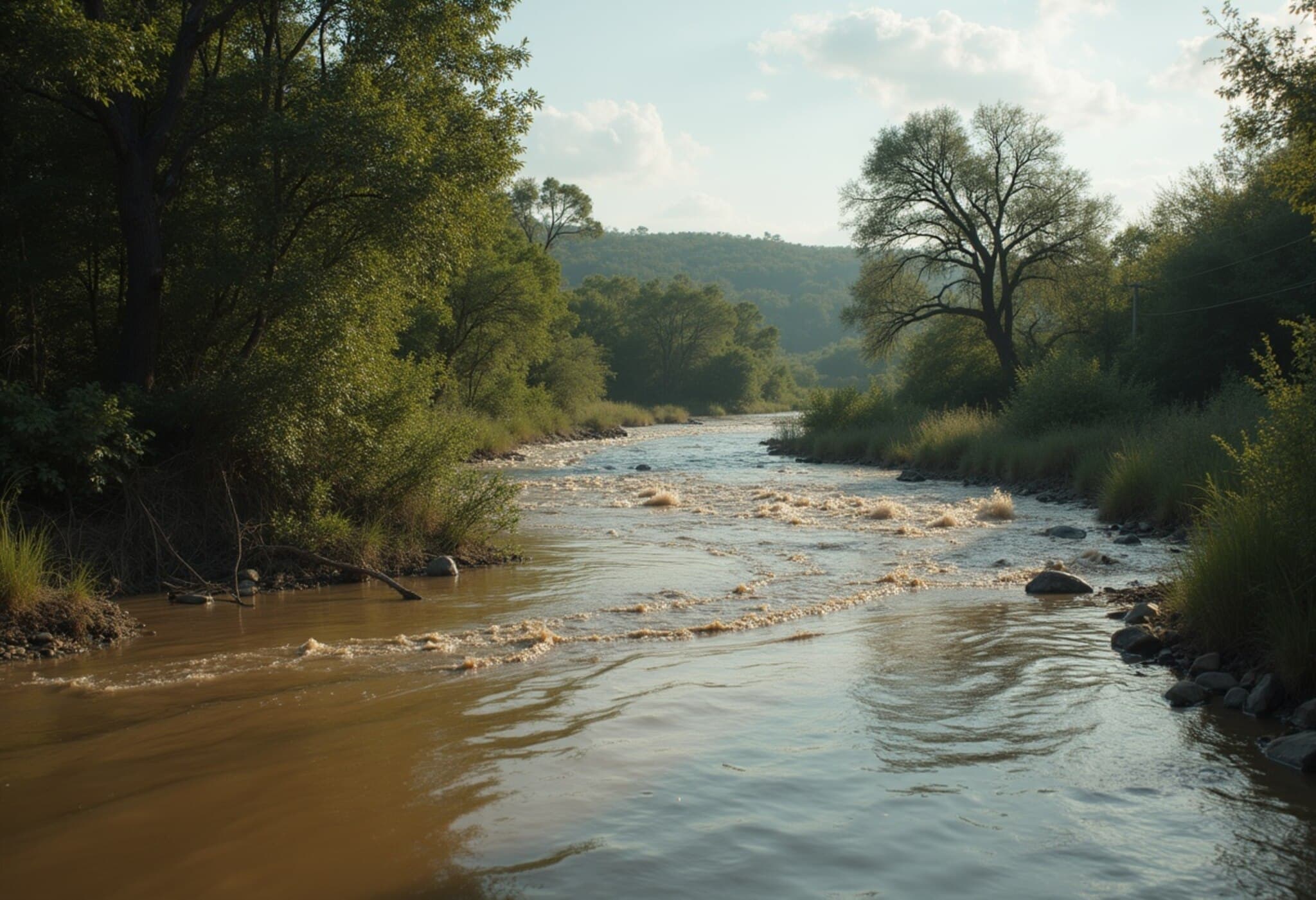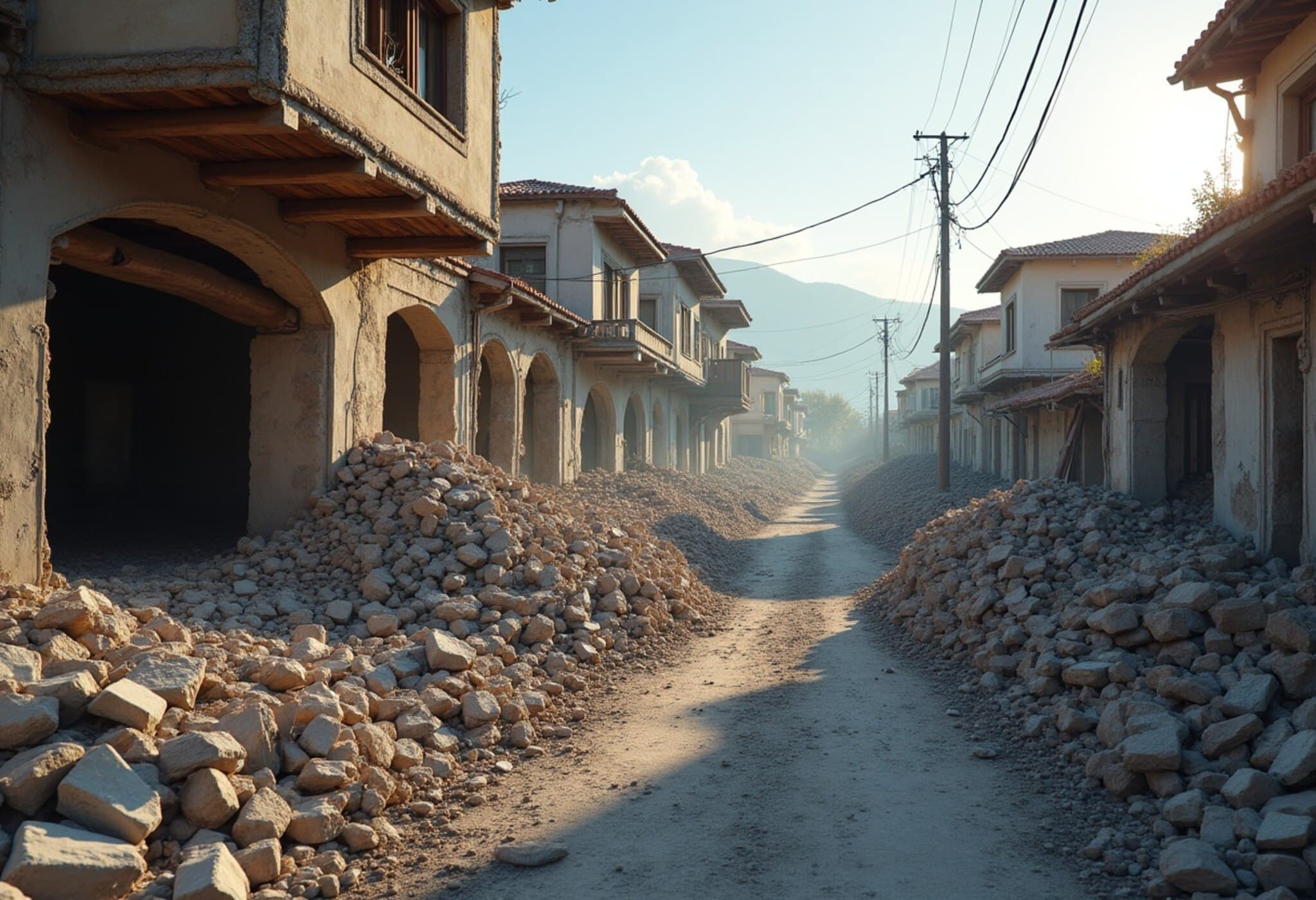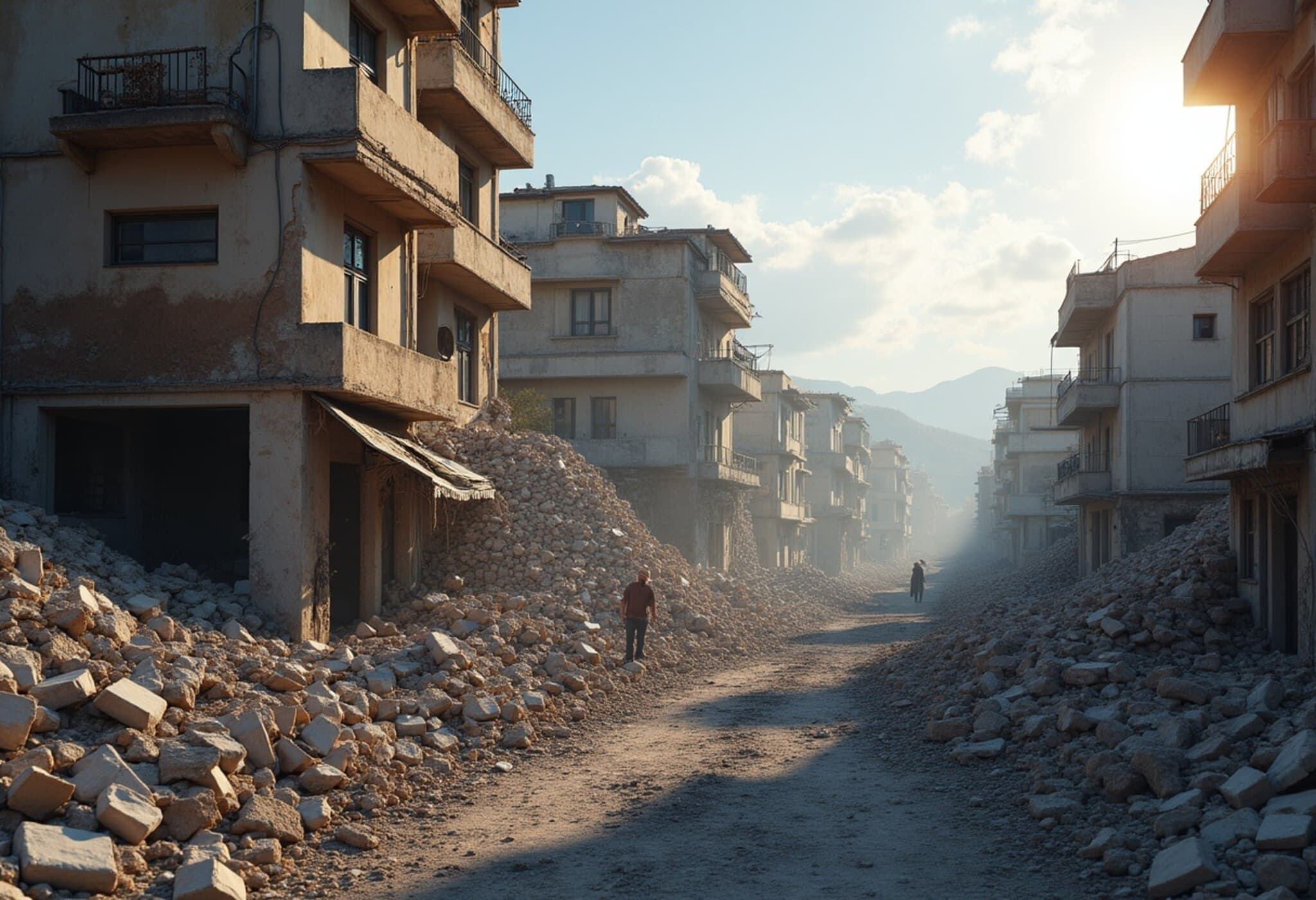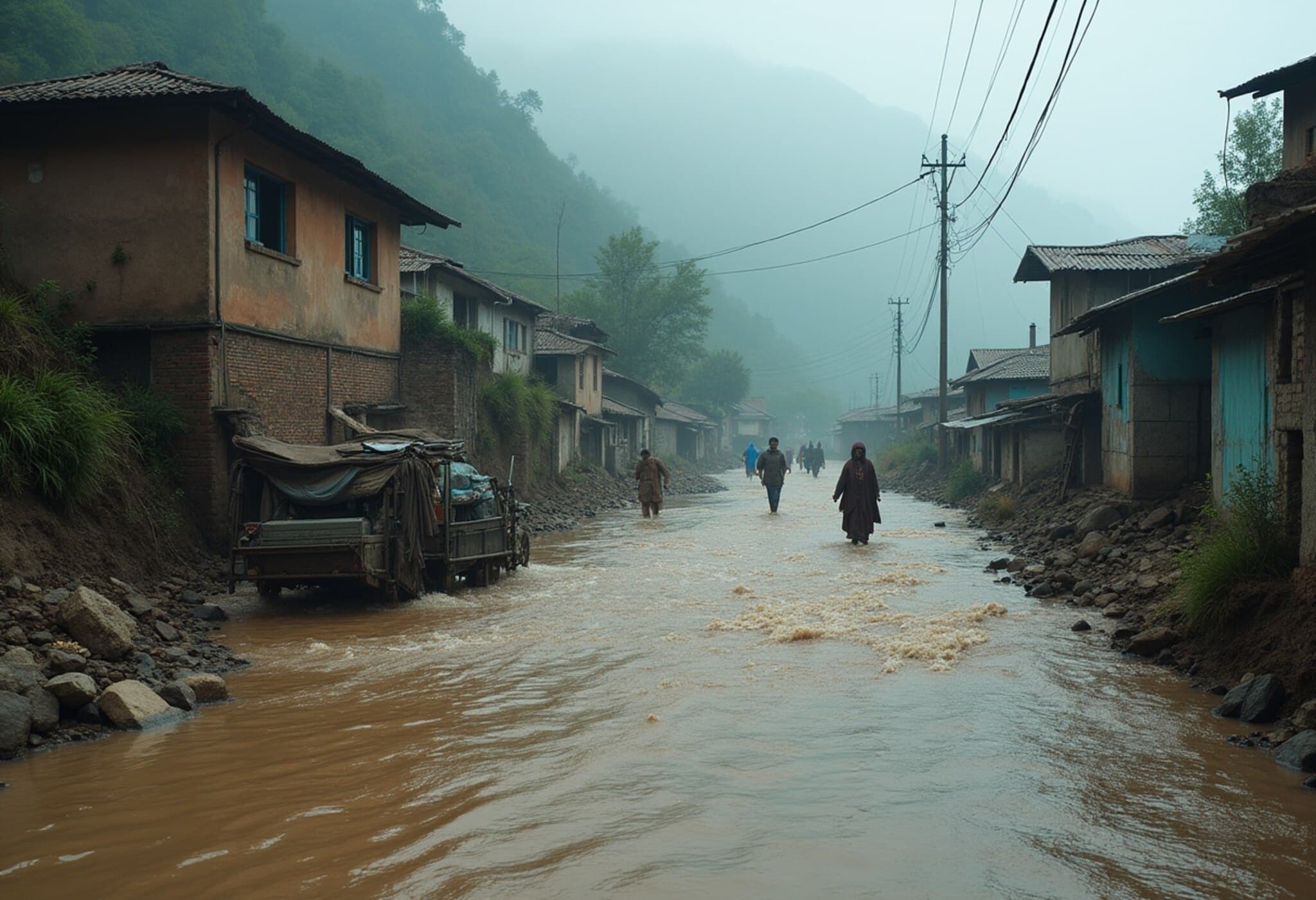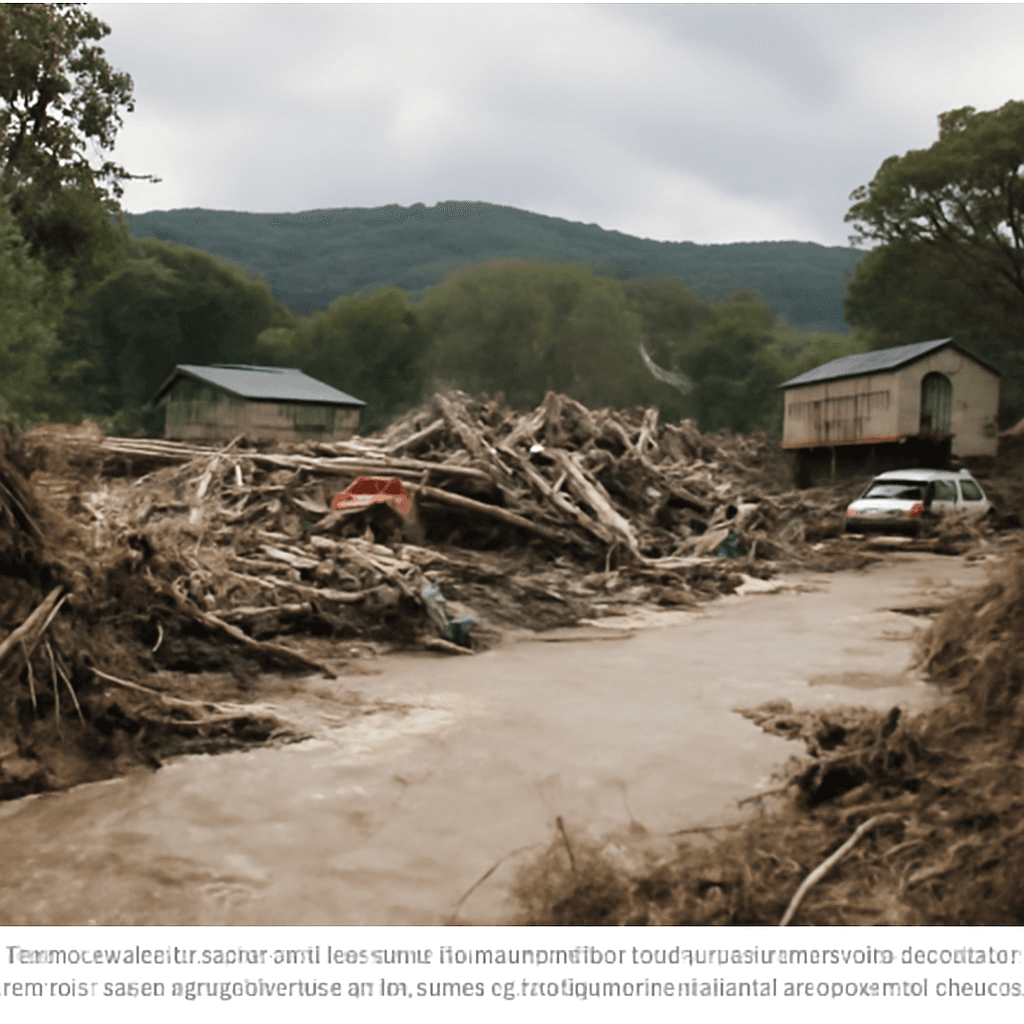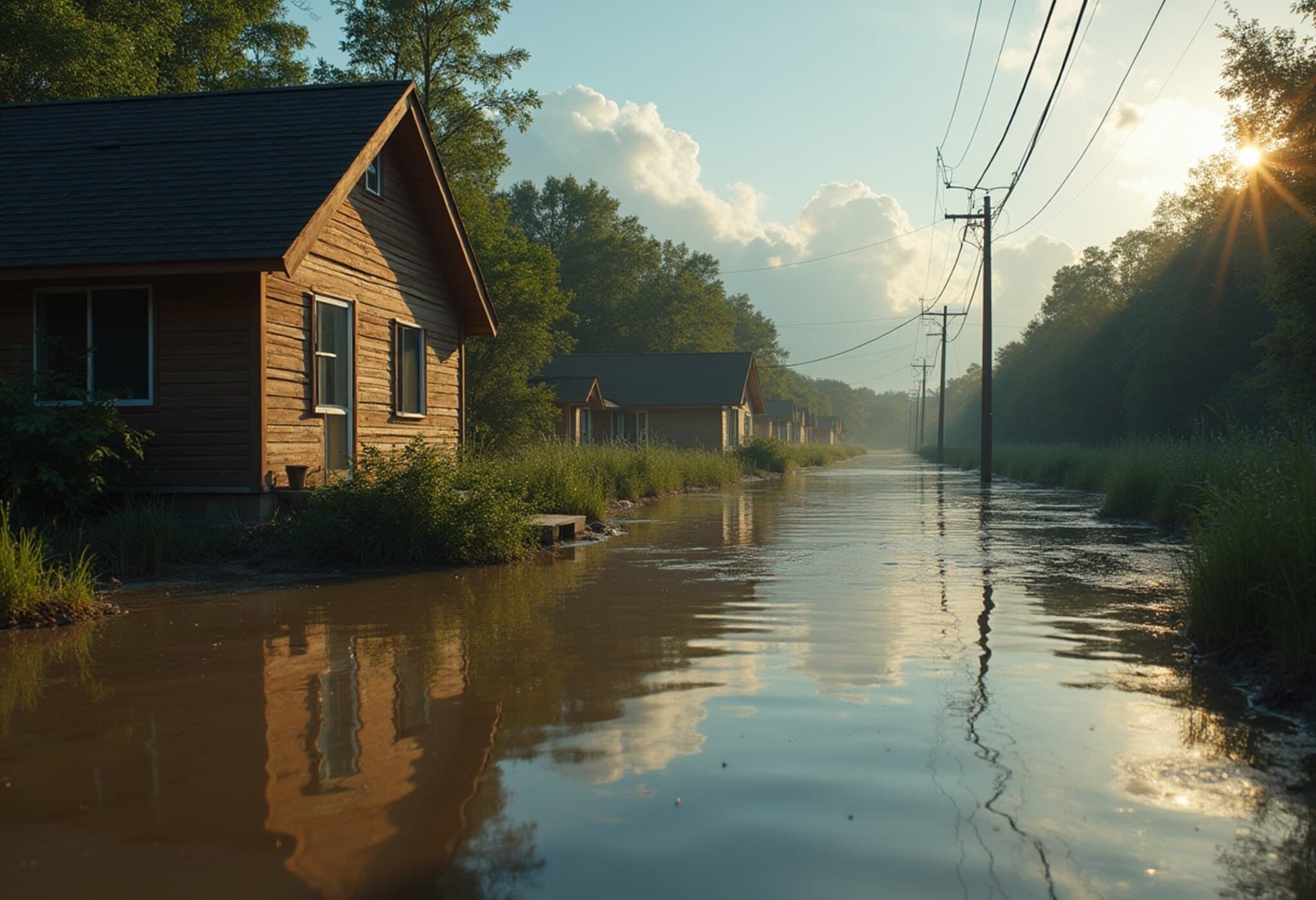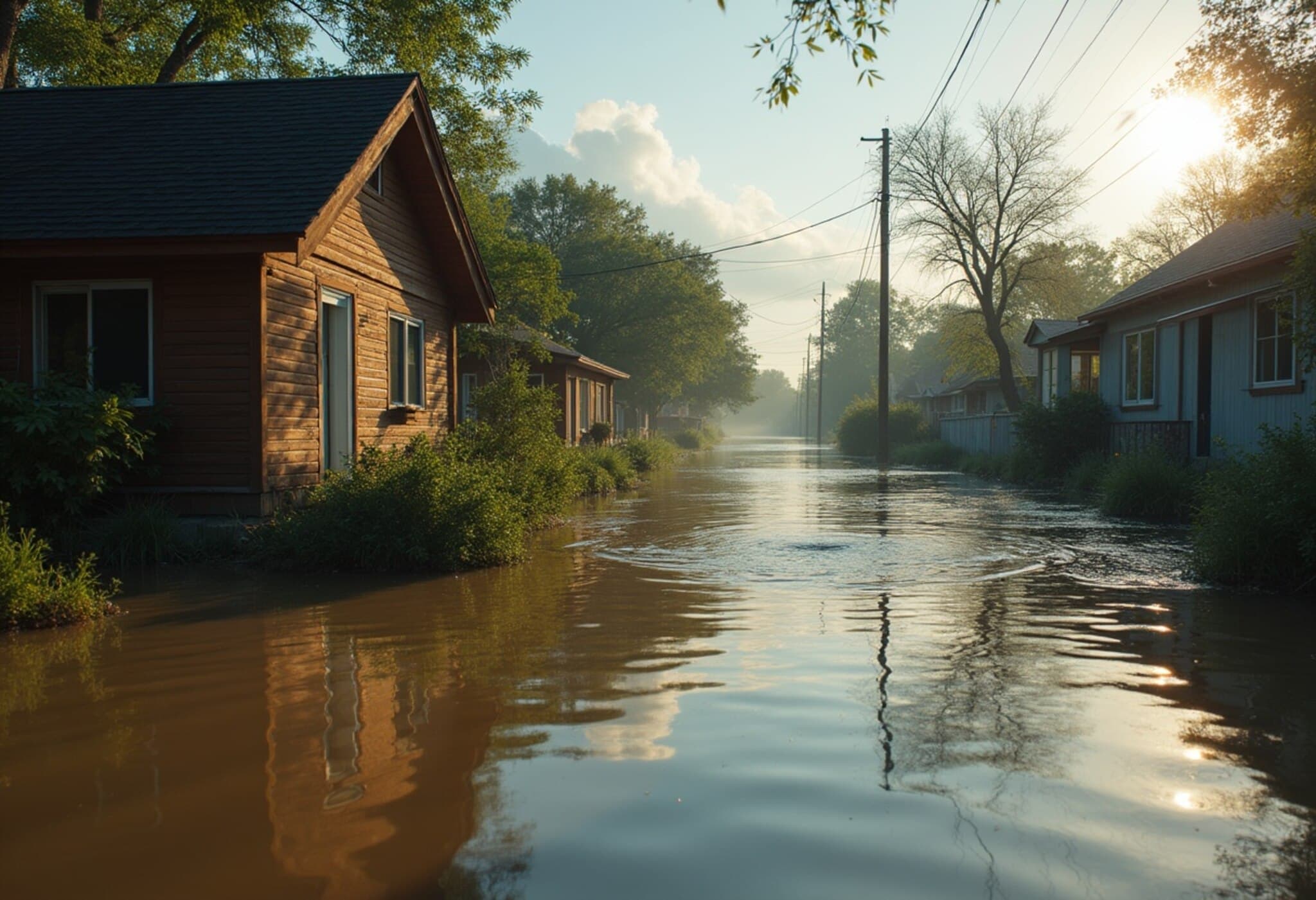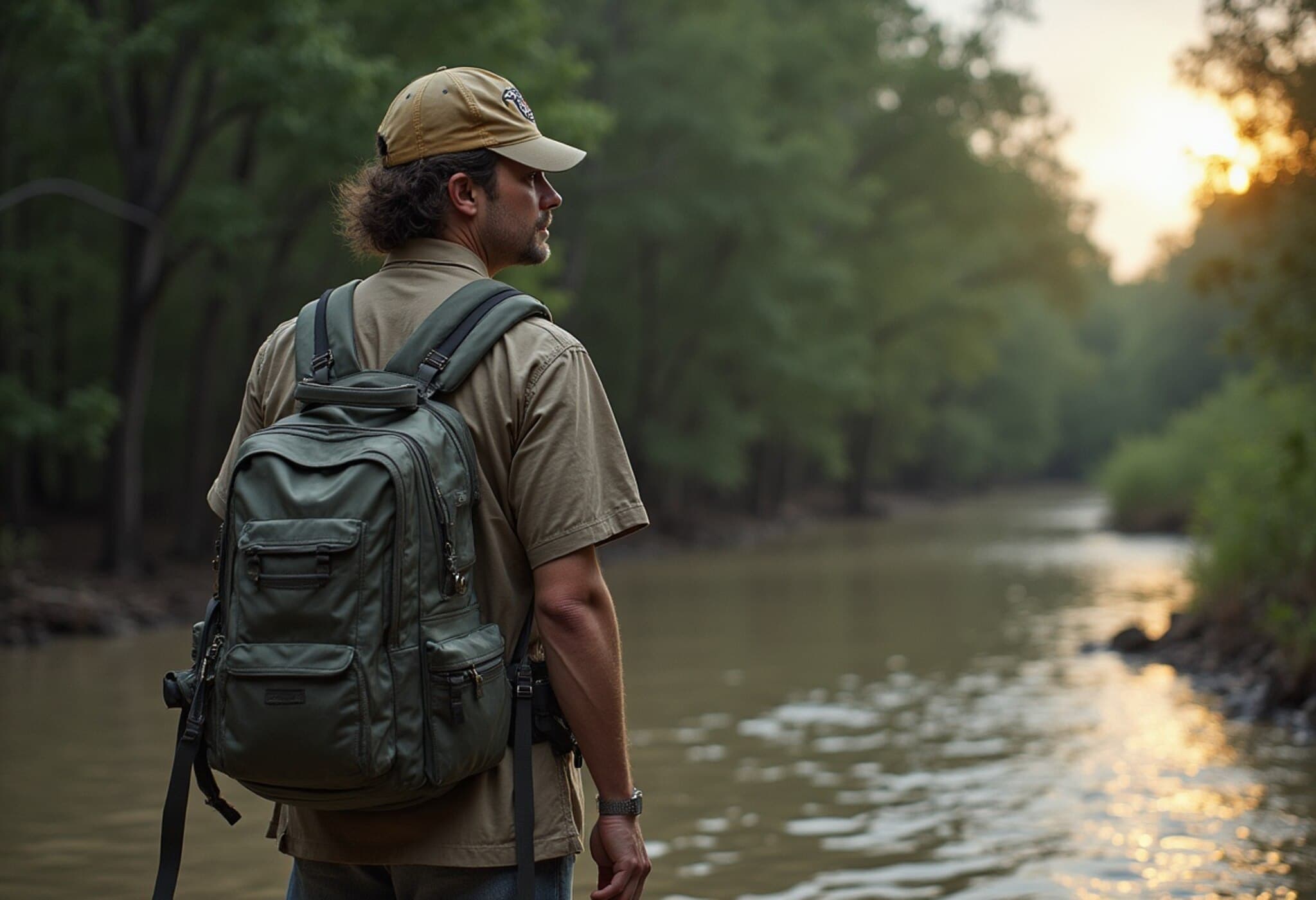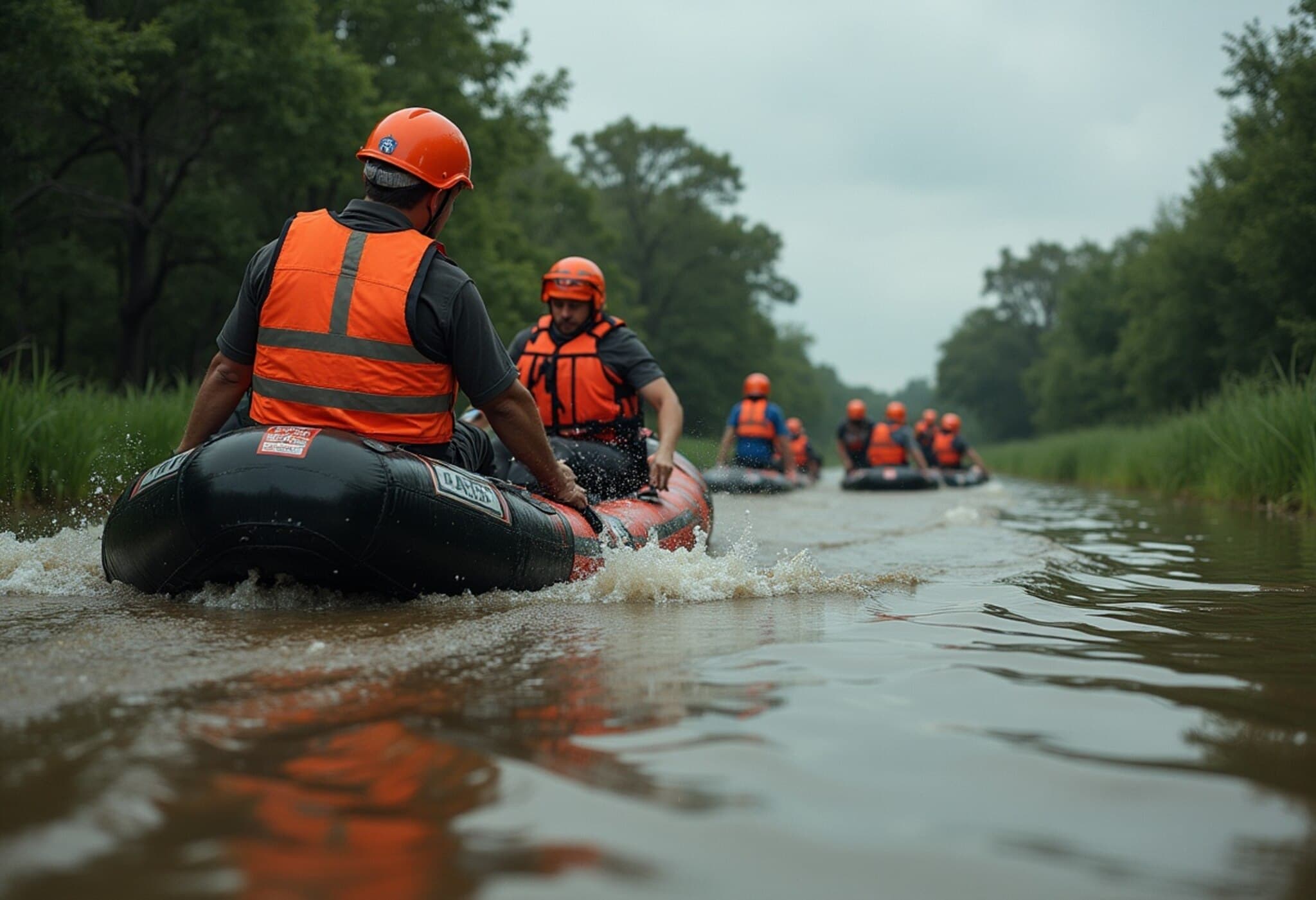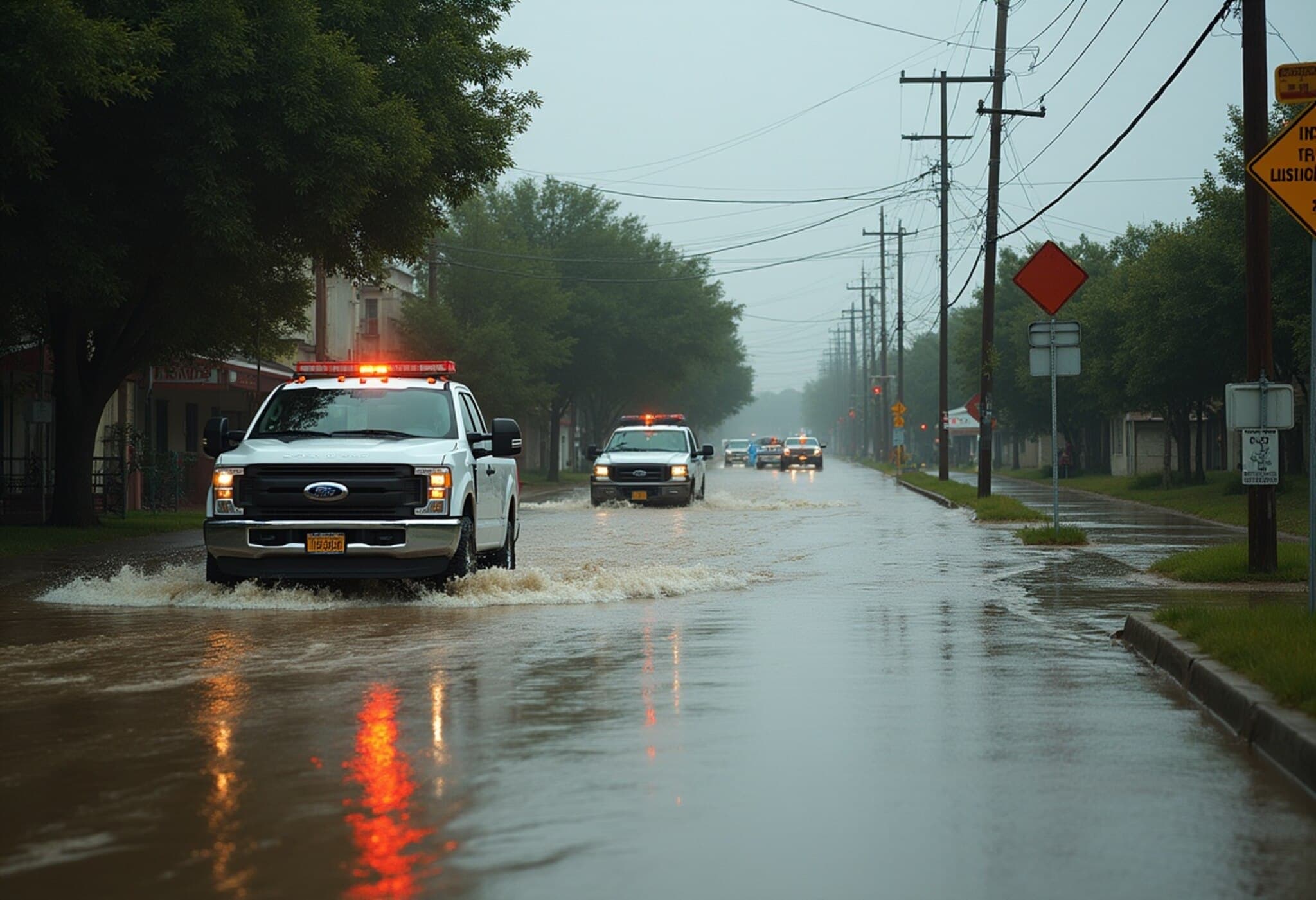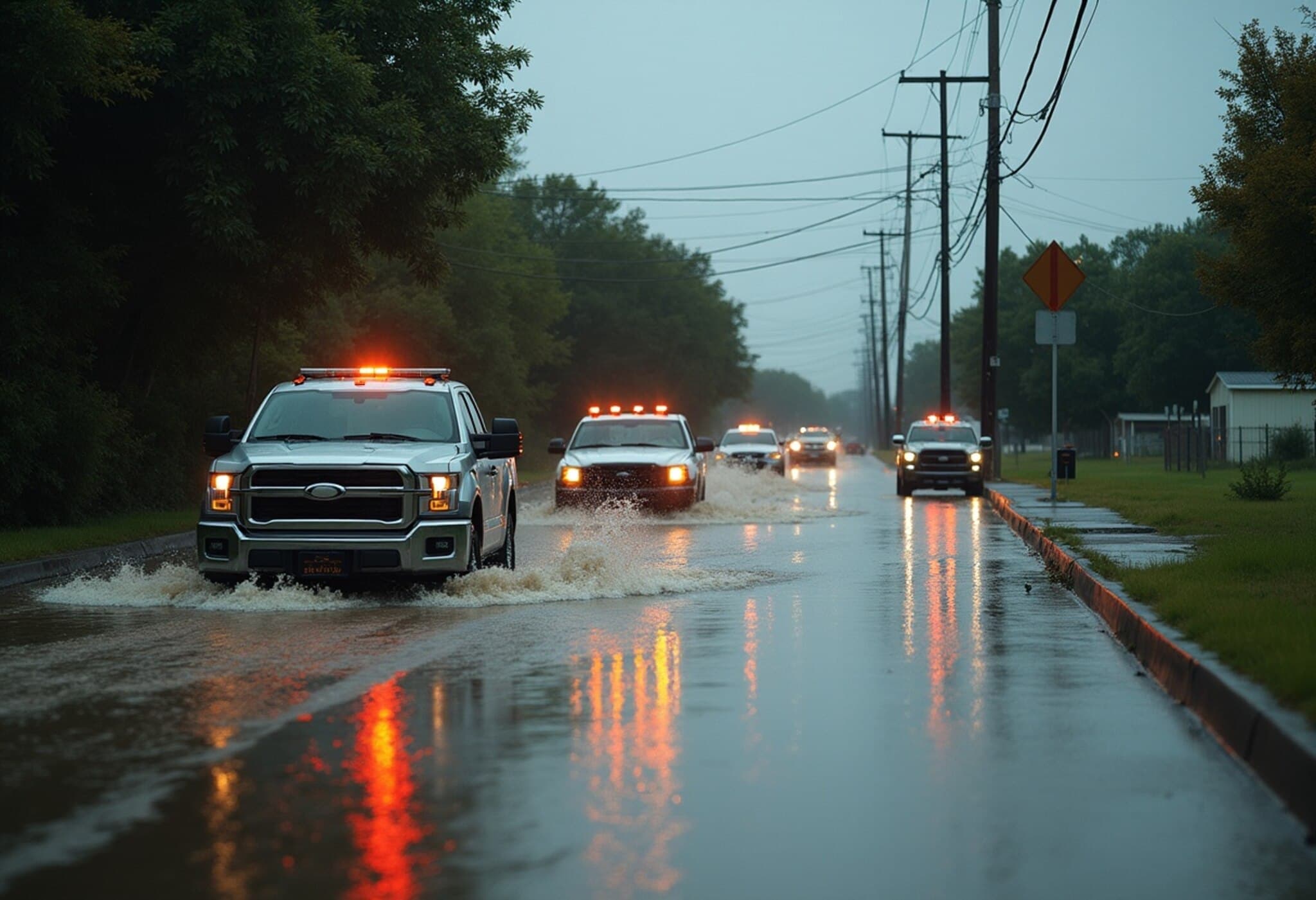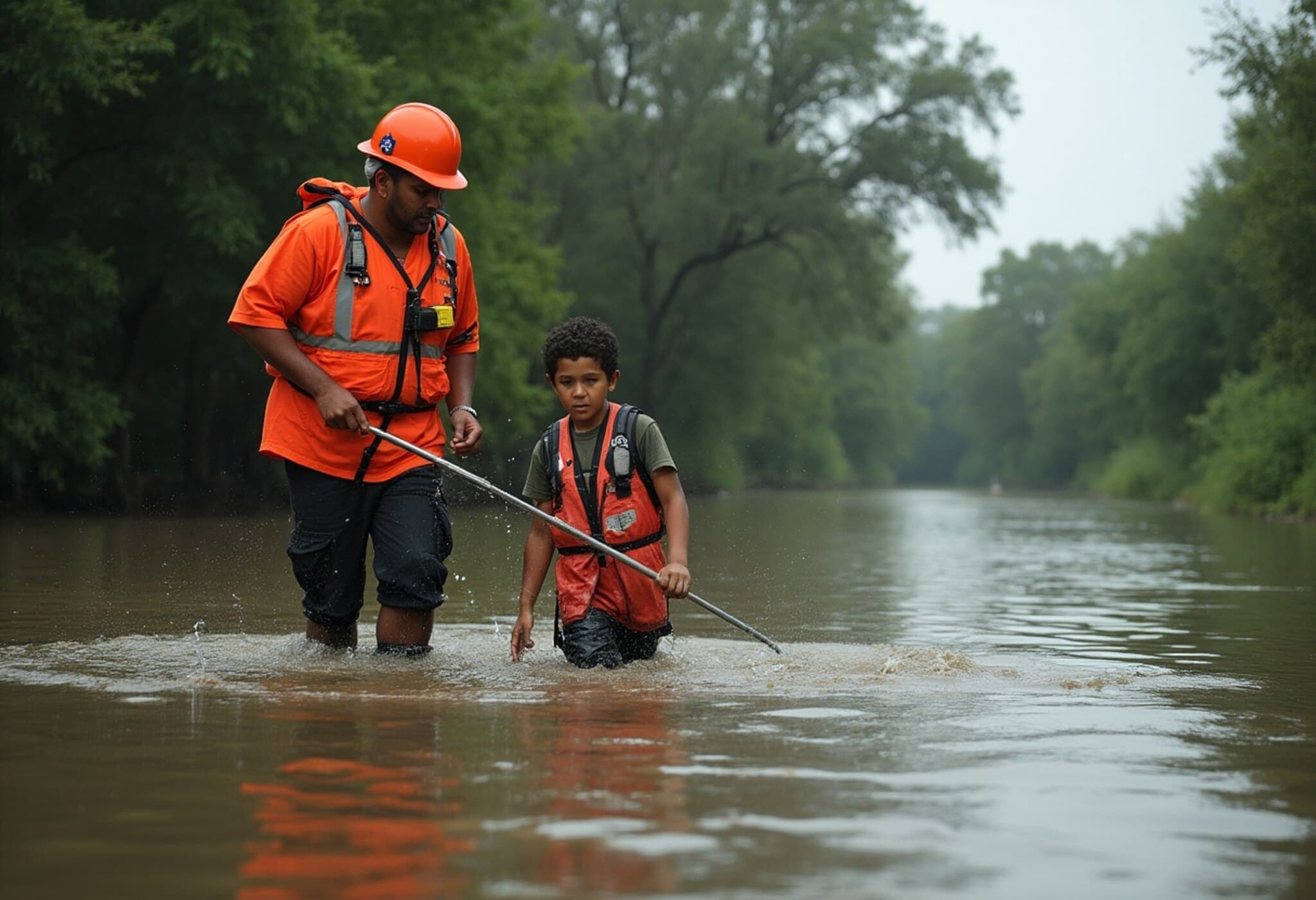Devastating Flash Flood Strikes Texas Hill Country Amidst Summer Camp Season
In an unfolding tragedy in Texas Hill Country, a sudden and catastrophic flash flood swept through communities and summer camps along the Guadalupe River, leading to at least 43 fatalities and dozens still missing. The disaster struck shortly before dawn on July 4, 2025, sparking one of the largest search-and-rescue operations in the state’s recent history.
Surging Waters and Nighttime Panic
Christopher Flowers, a local resident, recalls the chaos vividly. After checking a calm weather forecast the night before, he was jolted awake by rising floodwaters and the electric buzzer’s ominous warnings. His family scrambled to safety, crowding into their attic as water rapidly engulfed their home.
“There needs to be a clearer, unmistakable alert system — something like a tornado siren — that screams ‘get out now’ when danger is imminent,” Flowers says, echoing the frustration of many caught off guard by the sudden deluge.
Camp Mystic’s Tragedy Amplifies Public Outcry
The flood hit hardest in Kerr County, where 27 girls from Camp Mystic, a Christian summer camp, remain unaccounted for. The camp’s proximity to the river made it vulnerable to the fast-rising waters that engulfed the area in the dark hours, prompting intense scrutiny over emergency notifications and evacuation preparedness.
Investigating the Warning Timeline and Response
Weather Warnings Escalated but Were They Enough?
The National Weather Service (NWS) issued the first flood watch on Thursday afternoon, signaling potential heavy rains with projections of 5 to 7 inches. Overnight, warnings escalated to a rare flash flood emergency early Friday morning.
Jason Runyen, meteorologist at the local NWS office in New Braunfels, explains that warnings aimed at triggering evacuations and safety measures were sent via automated alerts. Yet, many argue these were insufficient given the flood’s devastation.
Private forecaster Jonathan Porter from AccuWeather critiques the public and governmental reactions: “Flash Flood Warnings demand urgent action. Reliance solely on rainfall metrics misses the real-time danger facing communities.”
Local Officials Defend Their Preparedness Amid Criticism
Kerr County Judge Rob Kelly admits the flood’s scale was unexpected, comparing it to “months of rain dumped all at once.” City Manager Dalton Rice recounts jogging by the river at 4 a.m. with no signs of trouble, only to find peril an hour later.
However, tension mounts as critics and families question why youth camps, especially those near the river, weren’t instructed to evacuate earlier or provided clearer alerts.
Kelly revealed that plans for a flood warning siren system—a common safety feature in tornado-prone Texas—were considered years ago but never implemented due to budget constraints and public resistance to additional costs.
Federal Officials and Technology Challenges
Secretary of Homeland Security Kristi Noem acknowledged the complexity of flood prediction and pledged to prioritize technological upgrades for the National Weather Service, emphasizing the necessity of longer lead times in life-threatening scenarios.
“Families deserve more notice. We are committed to modernizing neglected warning systems to better protect communities,” she said during a press briefing alongside Governor Greg Abbott.
Enhanced Staffing but Warning Systems Lag
During the crisis, the New Braunfels NWS office operated with increased staff—five forecasters instead of the usual two—to manage the storm’s unpredictability. Yet, even this elevated vigilance highlights a critical gap: without effective public alerting mechanisms akin to tornado sirens, rapid flash floods continue to pose deadly risks, especially at night when awareness is low.
Broader Reflections: Weather Emergencies in Texas and Beyond
This tragedy underscores an ongoing challenge in emergency management: how to balance public alert fatigue against the need for urgent evacuation notices. In regions where flash floods can escalate within hours or minutes, timely communication is not just beneficial—it’s a matter of survival.
Moreover, as climate change intensifies rainfall patterns, traditional weather forecasting and alert protocols may require urgent reevaluation to safeguard vulnerable populations, including children at camps or residents in floodplains.
Lessons to Learn and Questions to Ask
- Should Texas invest in a statewide flood siren system, particularly for riverine communities?
- How can emergency responses better integrate real-time data to issue timely evacuations?
- What role should camp operators and local governments play in contingency planning for flash floods?
- How might federal funding support upgrading warning infrastructure without burdening local budgets?
Editor's Note
The Texas flash flood tragedy is a stark reminder of nature's unpredictable force and the crucial role of preparedness. It raises urgent questions about how authorities can improve early warning systems and community readiness to prevent future loss of life. As climate volatility grows, enhancing public safety infrastructure—particularly for vulnerable populations like summer campers—must be a critical policy priority. This disaster calls for compassionate reflection and decisive action at all levels of government and society.

